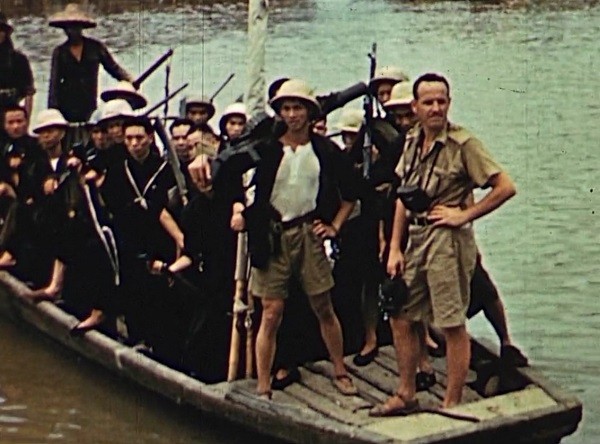Hawaii-based Chinese-American documentary filmmaker and producer Robin Lung is currently working on “Finding Kukan,” her personal account of how her curiosity over a fictional detective led her to encounter Li Ling-Ai, which paved way for the finding of the lost 1941 wartime documentary, “Kukan” (“Bitter Struggle”).
The Stanford University and Hunter College alumna is chronicling her “factual journey out of the fictional past” through “Finding Kukan.” She aims to complete production by Dec. 2015.
Lung said in an interview with New Zealand-based blogger Marian Evans that she initially wanted to know the possible real-life inspiration behind the fictional Asian detective, Lily Wu, the lead character of the detective novels she once read.
Lily Wu was created by American mystery writer Juanita Sheridan, the pseudonym of Juanita Lorraine Light (1906-1974).
The female detective appeared in Sheridan’s “The Chinese Chop” (1949), “The Kahuna Killer” (1951), “The Mamo Murders” (1952) and “The Waikiki Widow” (1953).
Lung’s interest to find the supposed “real” Lily Wu gave her the chance to meet Chinese-American playwright Li Ling-Ai (1908-2003), aka Gladys Li, whom she eventually learned was the producer of “Kukan” but didn’t receive credit for it.
In the opening credits, Li’s name only appears as the documentary’s technical adviser.
“Kukan” shows the natives of China and the country’s patches of life during the Japanese occupation. The last 20 minutes of the documentary recorded the actual aerial bombing of Chongqing on Aug. 19-20, 1940.
It has the subtitle, “The Battle Cry of China.” It also used the tag lines, “The Secret of Unconquerable China” and “The Story Japan Never Wanted the World to Know!”
It was shot, written and narrated by American photojournalist Rey Scott (1905-1992), the one commissioned by Li for the project.
For his work, Scott received the Academy Honorary Award given by America’s Academy of Motion Picture Arts and Sciences (AMPAS), the organization behind the Academy Awards, aka The Oscars.
Scott’s 90-minute documentary was released in the U.S. on June 23, 1941. A 63-minute version was shown in July 1942.
“Kukan” received favorable reviews from various reputable sources.
Chicago Tribune wrote: “Maximum in educational and enthralling entertainment value.”
The New York Sun wrote: “A vivid picture of a great land united against aggression . . . the finale is terrific.”
The New York Times wrote: “It had to be filmed by a man for whom death was always one minute away! Overpowering! See it by all means!”
Time magazine wrote: “‘Kukan’ is a vastly absorbing look at the forging of a new nation . . . most awesome bombing sequence of World War II.”
In an effort to trace the whereabouts of the film, which eventually got lost after World War II (1939-1945), Lung searched for the descendants of Scott who sired four sons. She was able to contact a female grandchild in 2009.
The grandchild, a visual artist, said during a part of the documentary: “Why hadn’t my dad told me about this amazing part of our (family’s) history?”
The reels of “Kukan” were stored in the basement of her house, “eroding away.”
Its restoration started in April 2010.
CRIEnglish reported in May 2015 that “Kukan” premiered in Chongqing Municipality.
People can log on to www.nestedeggproductions.com to make donations in the making of the documentary.



























